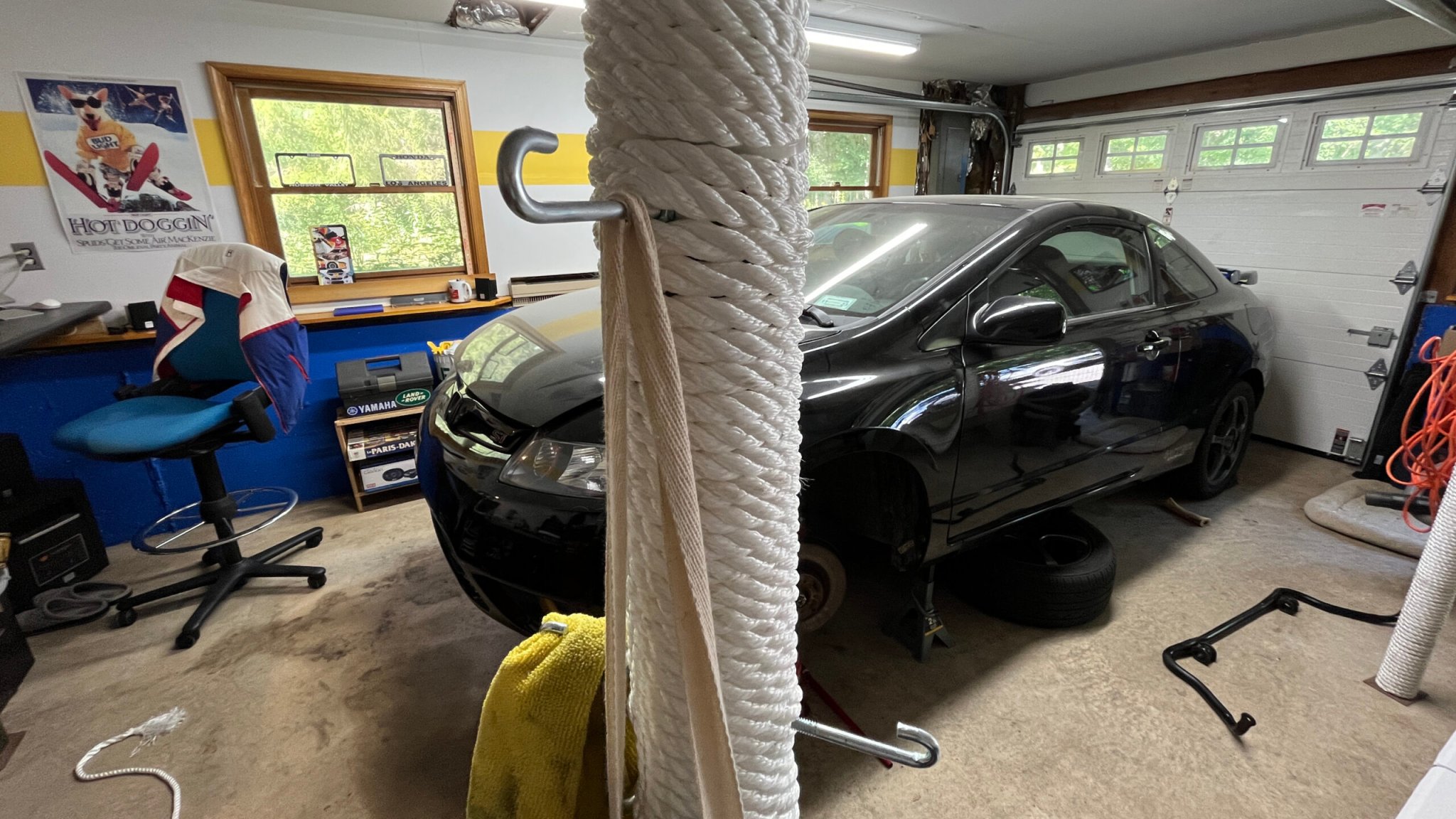

Do you have ugly supporting poles or house jacks in your garage, disrupting a nice car-cave aesthetic? If you can’t or don’t want to remove them, this rope-wrapping method is simple and satisfying to look at. Plus, it’s easy to un-do if a building inspector needs to come through.
House jacks or supplementary support poles are sometimes temporary, sometimes permanent, and sometimes supposed to be temporary but left in place for decades. They’re not uncommon to find in the basements or garages of older houses. The International Association of Certified Home Inspectors has an informative article on adjustable steel columns if you want to learn more.
If you’re looking to adjust or remove house jacks like that altogether, have a structural engineering professional inspect them in person. That’s all I’m going to say on the matter because I don’t really know how they work and I’m definitely not about to get blamed for anybody’s ceiling falling down.
But regardless of how hard your house jacks may or may not be working, you’re not going to disturb them by wrapping them in a little rope. So here’s what I did and some thoughts for anybody who might be inclined to replicate my project.

First, check your pillars up and down for cracks or damage, or structural defects. You might as well.
Then look at any holes they might have and think if you’d want to run hooks through them. I’m sorry to say I lost the in-progress pictures I took, but all I did was get two J hooks and some nuts and washers, then linked them inside the pillar with a threaded coupler.

Critically, you’re going to want to keep your hooks small and whatever you hang on them very light. Again, assuming you don’t know the structural significance of the pillars in your place, you don’t want to add undo stress on them. I hang rags and an apron and a few tiny tools off mine. A few ounces isn’t going to bring the house down.

Once that’s all set, I started my rope wrap at the bottom, arrested it with a big industrial Zip-Tie, and just started doing a tight wrap around the whole thing.

I bought 0.5-inch rope in 50-foot pre-wrapped pieces at Lowe’s, which was a mildly idiotic method of acquiring rope for this project. Do not do this, you’ll spend way too much money. I’m confident you can find a decorative rope or somewhere you can get bulk single lengths.
When I ran out of rope in one packet, I just Zip-Tied the end onto the pillar and started a new length of rope. The transitions are slightly inelegant but not very noticeable unless you’re looking for them.

At the very top, I simply cut the excess rope away and, again, used one of my amazing Zip-Ties to pin it to the pillar. That’s it!

Regardless of where you get your rope, here are some useful measurements for those of you feeling inspired:
To wrap a cylindrical pillar that is:
- Seven feet (84 inches) tall and 2.25 inches in diameter,
I used:
- 140.5 feet (1,686 inches) of 0.5-inch diameter rope.
- And 14-inch cable ties (Zip-Ties).
So, napkin math tells us you’ll need about 20 feet of rope for every foot of height your pillar is. Assuming your pillar and rope are the same girths as mine.
If I could do it over, I’d have found a much cheaper rope. But aesthetically I wouldn’t recommend any rope thinner than the 0.5-inches in girth. Plus, anything smaller than that will take even longer to wrap.
I failed to keep track of exactly much time I spent wrapping my house jacks since I did it in a bunch of little spurts. But I will warn you that you might get a dizzy doing lap after lap around the thing. So maybe don’t take more than one beer break on this job.

So yeah—there’s not much to this. But I think it adds a lot to the presentation of the little two-bay garage here. Here’s hoping I’ve provided you with some kind of inspiration, or at least, entertainment.